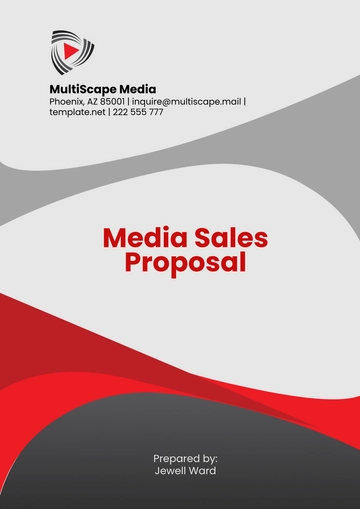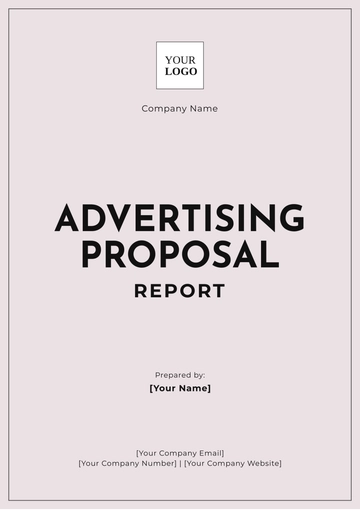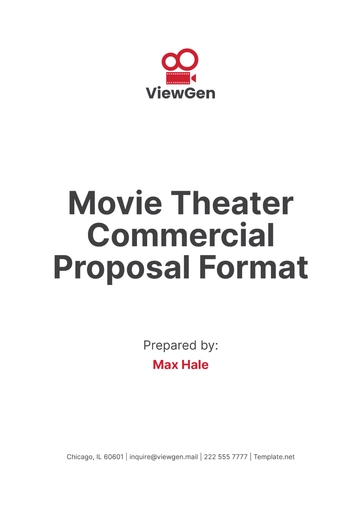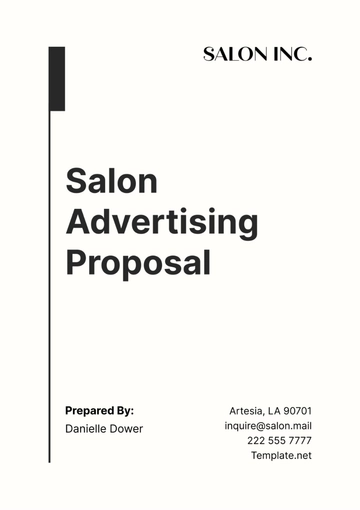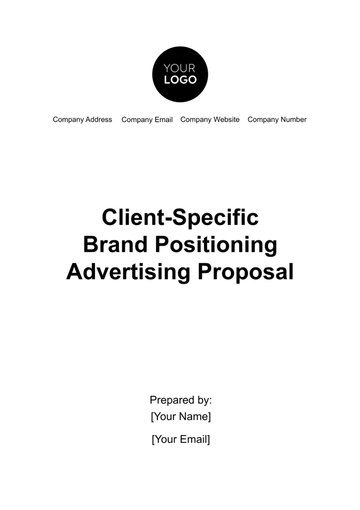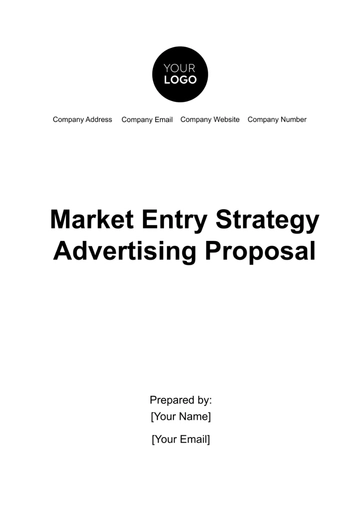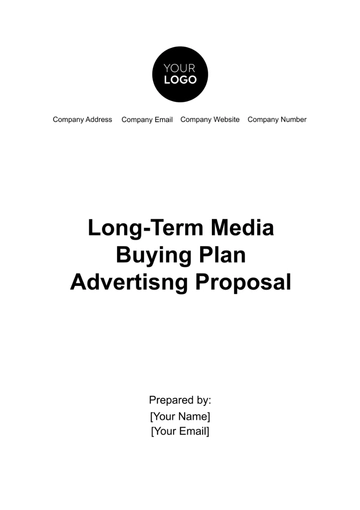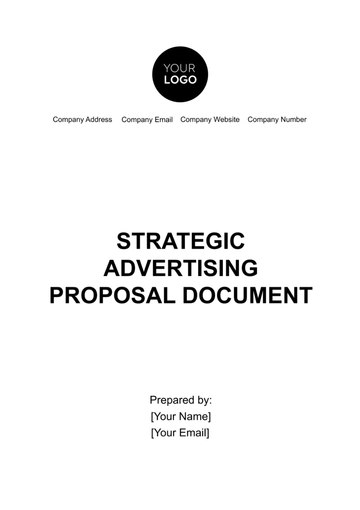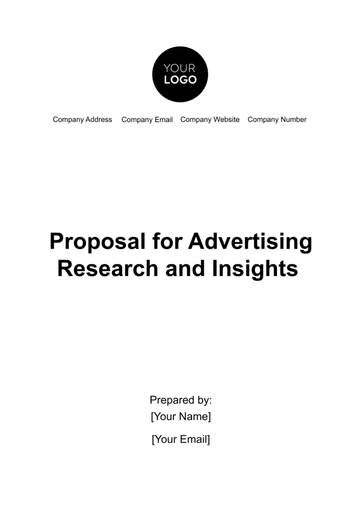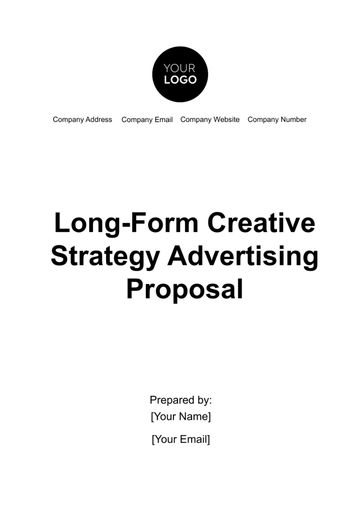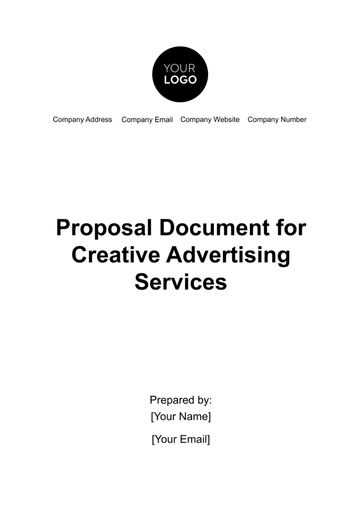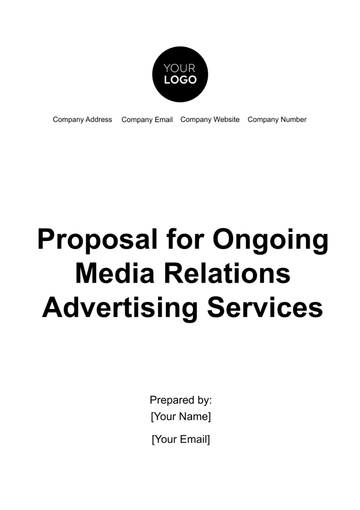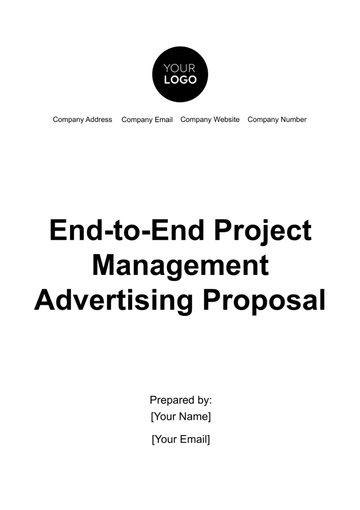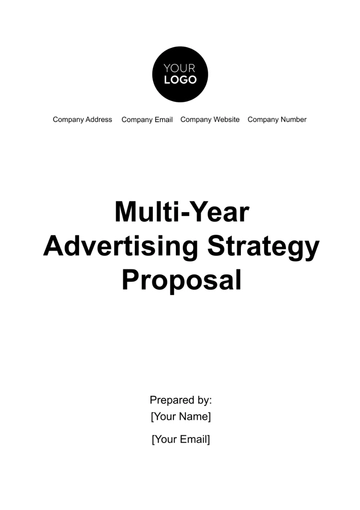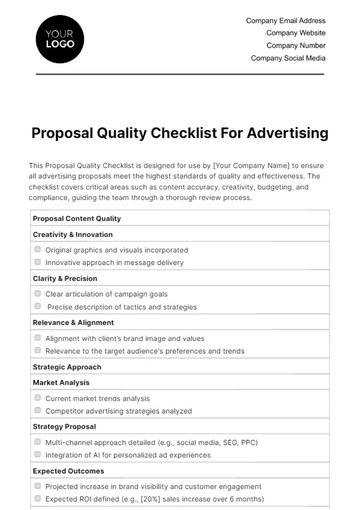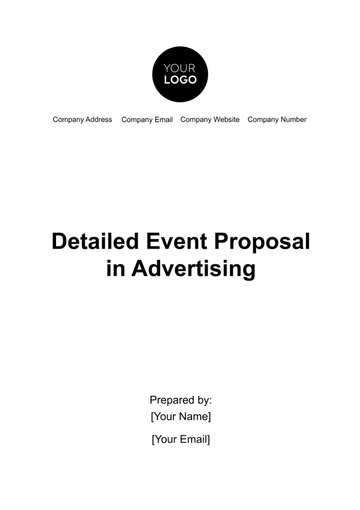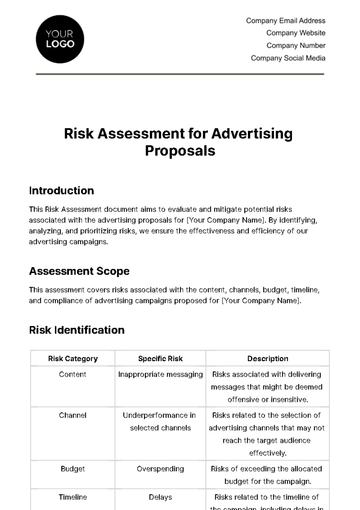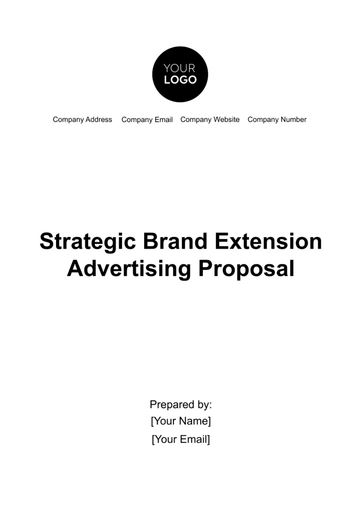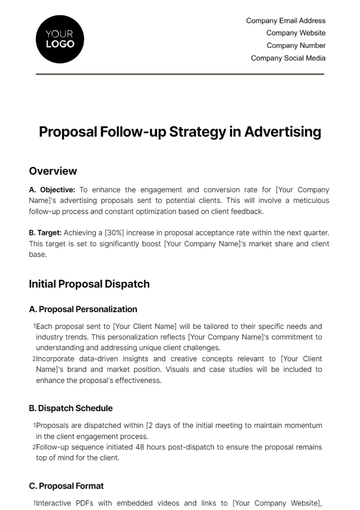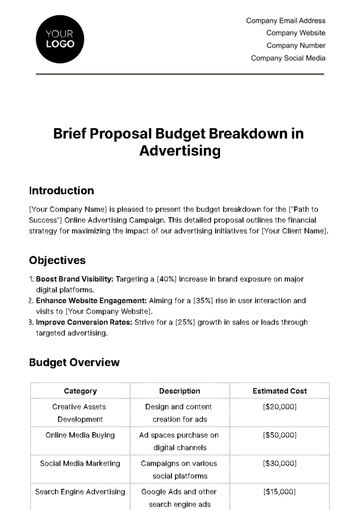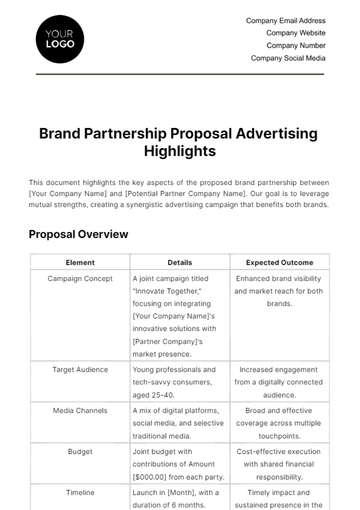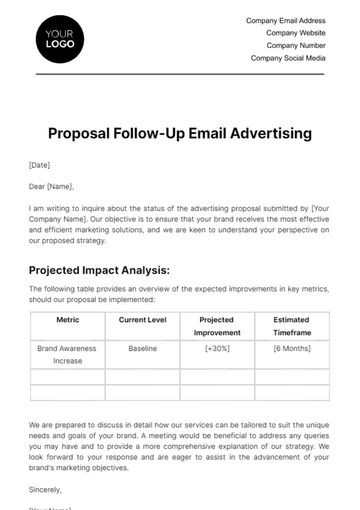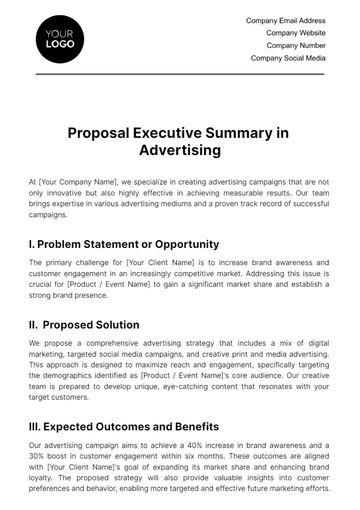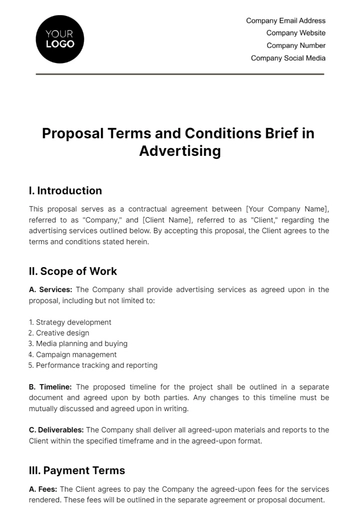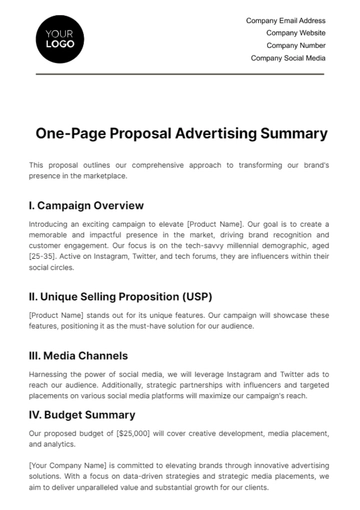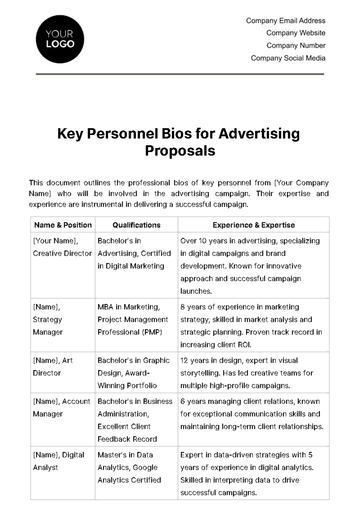Free Advertising Integrated Online Campaign Proposal
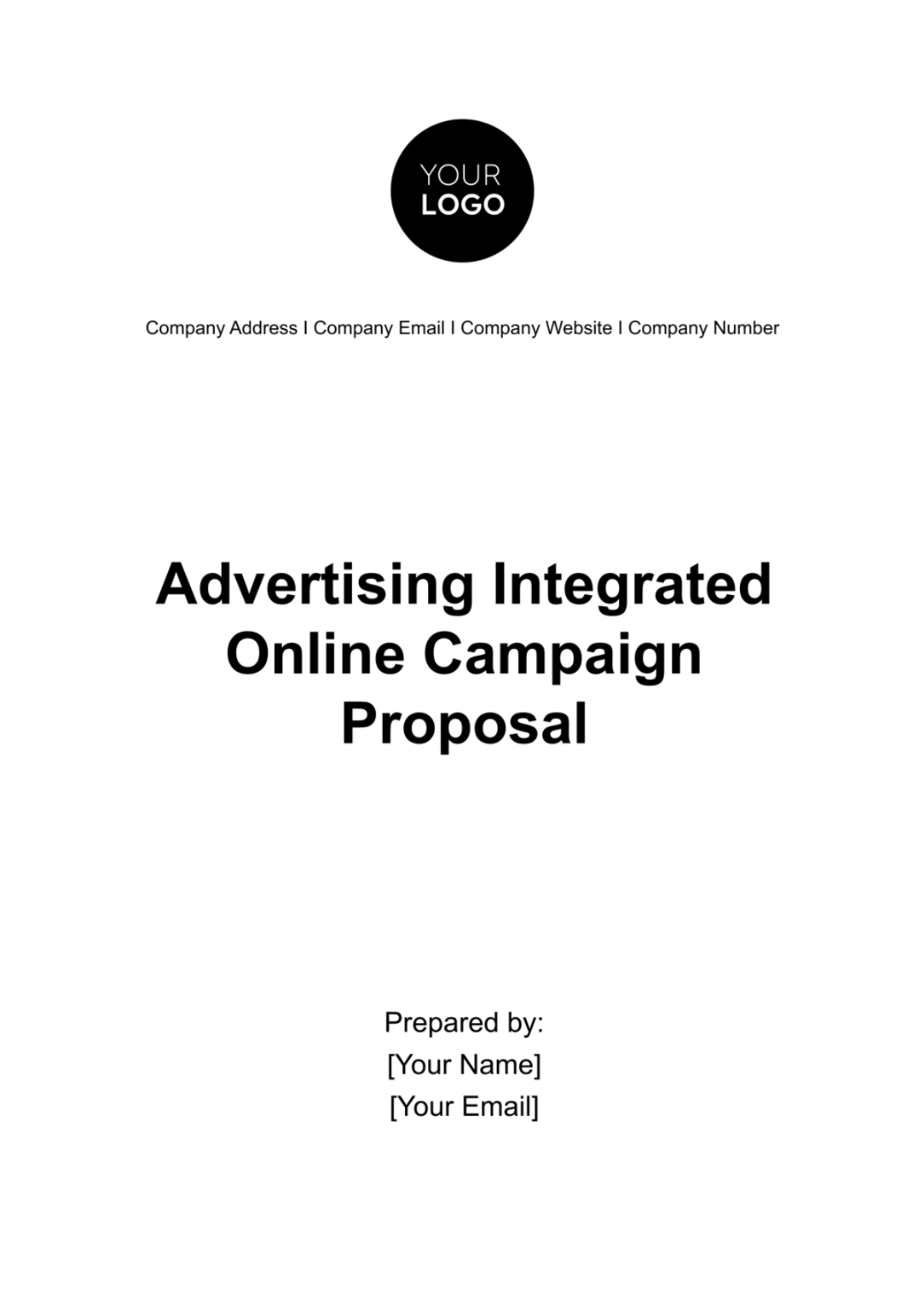
I. Executive Summary
[Your Company Name] is delighted to present this comprehensive proposal for an Advertising Integrated Online Campaign to support the marketing efforts of [Your Partner Company Name]. Our mission is to elevate the digital presence of [Your Partner Company Name] and help you achieve your business goals through an innovative and results-driven marketing approach.
II. Campaign Objectives
Our proposed Advertising Integrated Online Campaign is designed to meet the following objectives:
Objective 1: Increase website traffic by 30% within three months.
To achieve this, we will implement a combination of search engine marketing (SEM) strategies, including targeted keyword optimization and pay-per-click (PPC) advertising, driving a surge in organic and paid traffic to your website.
Objective 2: Generate 500 leads per month through online forms.
We will employ a lead generation strategy, crafting compelling landing pages, and deploying enticing lead magnets that resonate with your audience's interests and needs. This will ensure a steady influx of potential customers.
Objective 3: Achieve a 15% click-through rate (CTR) on display ads.
Our creative team will design captivating display ads, strategically placed on high-traffic websites and platforms, to entice users to click through to your website, achieving an impressive CTR.
III. Target Audience
Primary Audience
Our primary audience consists of tech-savvy individuals aged 25-40, residing in urban areas across the United States. They are highly active on social media, and their online behavior indicates an interest in technology products and services. This demographic segment values convenience, innovation, and seamless digital experiences.
Secondary Audience:
The secondary audience comprises decision-makers within small to medium-sized enterprises (SMEs) seeking technology solutions to enhance their business operations. This audience group is primarily reached through LinkedIn and industry-specific forums and events. They prioritize efficiency, cost-effectiveness, and reliability in their tech choices.
IV. Campaign Strategy
We will employ a multi-channel approach to reach and engage the target audience effectively. Our strategy includes the following components:
Search Engine Marketing (SEM): Utilize pay-per-click (PPC) advertising to drive immediate traffic and conversions. For example, we will allocate a budget of $5,000 per month for SEM, targeting high-value keywords related to your products and services. This will result in increased visibility on search engines like Google and Bing, driving relevant traffic to your website.
Social Media Advertising: Create and manage highly targeted social media ad campaigns to boost brand awareness and engagement. On platforms such as Facebook, Instagram, and LinkedIn, we will invest $3,000 per month to create visually appealing ad creatives, run A/B tests, and optimize ad placements for maximum reach and engagement.
Content Marketing: Develop and distribute high-quality, relevant content to attract and retain the audience's interest. This will involve the creation of blog posts, infographics, and videos related to your industry. We will allocate $2,000 per month to content production and promotion, ensuring a steady stream of valuable content to engage your audience.
Display Advertising: Use eye-catching display ads to reach potential customers across the web. These visually appealing ads will be displayed on relevant websites and platforms. With a monthly budget of $1,500, we will employ retargeting techniques to re-engage website visitors who didn't convert initially, increasing the chances of conversion.
V. Budget Allocation
Channel | Budget Allocation | Details |
|---|---|---|
SEM | $5,000 | Keyword research and optimization: $1,500 |
PPC ad spend: $3,000 | ||
Landing page development: $500 | ||
Social Media Advertising | $3,000 | Facebook Ads: $1,200 |
Instagram Ads: $800 | ||
LinkedIn Ads: $1,000 | ||
Content Marketing | $2,000 | Content creation (blogs, infographics, videos): $1,200 |
Content promotion: $800 | ||
Display Advertising | $1,500 | Display ad creative design: $800 |
Ad placement and management: $700 |
Search Engine Marketing (SEM):
Keyword research and optimization: This involves in-depth keyword analysis and optimization of ad campaigns to ensure maximum ROI.
PPC ad spend: The majority of the budget is allocated to PPC advertising, which includes bid management and ad placement.
Landing page development: Funds are reserved for creating dedicated landing pages that enhance conversion rates and user experience.
Social Media Advertising:
Facebook Ads: This includes the budget for creating and promoting ads on Facebook to target specific demographics.
Instagram Ads: Funds are designated for Instagram advertising, leveraging the platform's visual appeal to engage users.
LinkedIn Ads: Allocated budget for LinkedIn advertising to reach a professional audience.
Content Marketing:
Content creation (blogs, infographics, videos): This budget covers the creation of high-quality content to engage and educate your audience.
Content promotion: Funds are set aside for promoting content through social media and email marketing.
Display Advertising:
Display ad creative design: Budget allocated for designing visually appealing display ads.
Ad placement and management: Funds for placing these ads on relevant websites and managing ad campaigns.
VI. Campaign Timeline
Task | Start Date | End Date |
|---|---|---|
Campaign Planning | January 15, 2050 | February 15, 2050 |
Content Creation | ||
Campaign Launch | ||
Ongoing Optimization | ||
Reporting and Analysis |
Campaign Planning
During this phase, we will conduct in-depth market research, competitor analysis, and audience segmentation to refine our campaign strategy. We'll collaborate with [Your Partner Company Name] to align our objectives and finalize the campaign plan.
Content Creation
This phase involves the creation of compelling content, including blog posts, infographics, videos, and ad creatives. We will ensure that all content is tailored to resonate with the target audience's interests and preferences.
Campaign Launch
On March 25, 2050, the campaign will officially launch across all selected channels. This includes the activation of PPC ads, social media ad campaigns, and the publication of engaging content. The launch phase will continue until April 1, 2050.
Ongoing Optimization
Throughout this phase, our team will continuously monitor the campaign's performance, make necessary adjustments, and conduct A/B testing to optimize ad placements, keywords, and content engagement. This phase is essential to ensure that the campaign remains effective and efficient.
Reporting and Analysis
On July 5, 2050, we will provide the first monthly report to [Your Partner Company Name], detailing key performance metrics such as website traffic, lead generation, CTR, and conversion rates. This reporting will continue on a monthly basis until August 5, 2050. The reports will include actionable insights and recommendations to refine the campaign's effectiveness further.
VII. Key Performance Indicators (KPIs)
Website Traffic (Monthly)
Our goal is to increase website traffic by 30% within three months. We will track the total number of monthly visitors, page views, and the average time spent on the site.
Lead Generation (Monthly)
To generate 500 leads per month through online forms, we will closely monitor the number of leads captured through contact forms, newsletter sign-ups, and other lead-generation mechanisms.
Click-Through Rate (CTR)
Achieving a 15% click-through rate (CTR) on display ads is a key performance indicator. We will calculate CTR by dividing the number of clicks by the number of impressions on display ads.
Conversion Rate
We aim to track the conversion rate for different campaign elements, such as landing pages, sign-up forms, and product pages. The conversion rate is the percentage of visitors who take the desired action, such as making a purchase or filling out a contact form.
Return on Investment (ROI)
Measuring ROI is essential to determine the campaign's overall effectiveness. We will calculate ROI by comparing the campaign's revenue generated to the total advertising costs, expressed as a percentage.
VIII. Campaign Monitoring and Adjustments
Our campaign monitoring and adjustment process is a critical component of our strategy to achieve optimal results. It includes:
Real-Time Analytics: We will utilize advanced analytics tools to monitor campaign performance in real time. This allows us to react swiftly to changing trends and adjust strategies accordingly.
A/B Testing: Continuously conducting A/B tests on ad creatives, landing pages, and messaging to identify what resonates best with the audience. We will implement changes based on these findings to enhance campaign effectiveness.
Budget Management: Regularly reviewing and adjusting budget allocation to maximize the impact of high-performing channels and campaigns while reallocating resources from underperforming areas.
Competitor Analysis: Ongoing assessment of competitors' activities and strategies to stay ahead in the marketplace and adapt our campaigns as needed.
IX. Reporting and Analysis
We will use advanced analytics tools to collect and analyze performance data from various campaign components. Our reporting process includes the following steps:
Data Collection: We will gather data from all campaign channels, including website analytics, ad platforms (Google Ads, Facebook Ads, etc.), and lead generation tools.
Data Analysis: Our team of analysts will conduct in-depth data analysis to identify trends, strengths, weaknesses, and areas for improvement. This analysis will include the interpretation of KPIs, such as website traffic, CTR, conversion rates, and ROI.
Monthly Reports: On a monthly basis, we will compile comprehensive reports summarizing the campaign's performance. These reports will be shared with [Your Partner Company Name] and will include visual representations of data, such as charts and graphs.
Recommendations: Each report will include actionable recommendations to optimize the campaign further. These recommendations may involve adjustments to ad targeting, content strategies, or budget allocation.
Regular Communication: We will maintain open lines of communication with [Your Partner Company Name] to discuss progress, answer questions, and address any concerns. We value transparent and collaborative communication throughout the campaign.
X. Campaign Reporting Frequency
We believe in transparency and regular reporting to keep [Your Partner Company Name] informed about campaign progress. Our reporting frequency will be as follows:
Monthly Reports: Comprehensive monthly reports will be provided on the 5th business day of each month, detailing performance metrics, key insights, and actionable recommendations. These reports will include visual representations of data, such as charts and graphs.
Quarterly Reviews: In addition to monthly reports, we will conduct quarterly reviews on the 15th business day following the end of each quarter. These reviews will provide a broader perspective on campaign trends and strategic adjustments.
Ad Hoc Updates: We are committed to open communication and will provide ad hoc updates whenever significant developments or opportunities arise.
XI. Conclusion
[Your Company Name] is excited about the opportunity to collaborate with [Your Partner Company Name] on this Advertising Integrated Online Campaign. Our team is committed to achieving the campaign's objectives, driving growth, and delivering measurable results.
Should you have any questions, require further clarification, or wish to proceed with this proposal, please do not hesitate to reach out to:
[Your Name]
[Your Email]
[Your Company Number]
- 100% Customizable, free editor
- Access 1 Million+ Templates, photo’s & graphics
- Download or share as a template
- Click and replace photos, graphics, text, backgrounds
- Resize, crop, AI write & more
- Access advanced editor
Propose digital synergy with the Advertising Integrated Online Campaign Proposal Template from Template.net. This editable template, easily customizable in our AI Editor Tool, outlines a cohesive strategy for combining various online advertising mediums, creating a unified and powerful digital presence. Present a comprehensive proposal that leverages the strengths of integrated online campaigns with our template!
You may also like
- Business Proposal
- Research Proposal
- Proposal Request
- Project Proposal
- Grant Proposal
- Photography Proposal
- Job Proposal
- Budget Proposal
- Marketing Proposal
- Branding Proposal
- Advertising Proposal
- Sales Proposal
- Startup Proposal
- Event Proposal
- Creative Proposal
- Restaurant Proposal
- Blank Proposal
- One Page Proposal
- Proposal Report
- IT Proposal
- Non Profit Proposal
- Training Proposal
- Construction Proposal
- School Proposal
- Cleaning Proposal
- Contract Proposal
- HR Proposal
- Travel Agency Proposal
- Small Business Proposal
- Investment Proposal
- Bid Proposal
- Retail Business Proposal
- Sponsorship Proposal
- Academic Proposal
- Partnership Proposal
- Work Proposal
- Agency Proposal
- University Proposal
- Accounting Proposal
- Real Estate Proposal
- Hotel Proposal
- Product Proposal
- Advertising Agency Proposal
- Development Proposal
- Loan Proposal
- Website Proposal
- Nursing Home Proposal
- Financial Proposal
- Salon Proposal
- Freelancer Proposal
- Funding Proposal
- Work from Home Proposal
- Company Proposal
- Consulting Proposal
- Educational Proposal
- Construction Bid Proposal
- Interior Design Proposal
- New Product Proposal
- Sports Proposal
- Corporate Proposal
- Food Proposal
- Property Proposal
- Maintenance Proposal
- Purchase Proposal
- Rental Proposal
- Recruitment Proposal
- Social Media Proposal
- Travel Proposal
- Trip Proposal
- Software Proposal
- Conference Proposal
- Graphic Design Proposal
- Law Firm Proposal
- Medical Proposal
- Music Proposal
- Pricing Proposal
- SEO Proposal
- Strategy Proposal
- Technical Proposal
- Coaching Proposal
- Ecommerce Proposal
- Fundraising Proposal
- Landscaping Proposal
- Charity Proposal
- Contractor Proposal
- Exhibition Proposal
- Art Proposal
- Mobile Proposal
- Equipment Proposal
- Student Proposal
- Engineering Proposal
- Business Proposal

